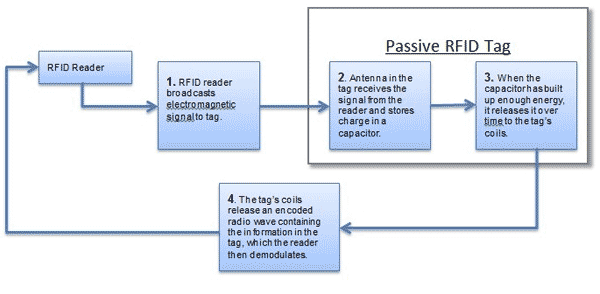RFID Passive Car Key
by Sarvesh Velankar, Clemson Automotive Engineering Graduate Student
- Basic Description
-
Radio-frequency identification (RFID) is a technology that uses radio waves to transfer data from an electronic tag called an RFID tag. RFID tages are attached to or embedded in objects and generally contain stored data describing the object. That data can be read wirelessly by readers located up to several meters away. There are two types of RFID tags, active tags and passive tags. The active tags have a built-in battery and are relatively expensive. The passive tags are relatively simple designs that derive their power from the incident field coming from the tag reader.
RFID Car Key : In 1997, Ford Motors installed the first RFID ignition immobilizers in the Mustang in the U.S. car industry. Theft levels for the Mustang immediately dropped by 70 percent in just two years. The results were stunning, and hence every carmaker later introduced it in their cars. Car manufacturers have now introduced Passive Keyless Entry and Start (PKES) systems that allow users to open and start their cars while having their car keys in their pockets. This makes it very convenient for the users as they don’t have to search for their keys while getting in and starting the car. A passive key with RFID utilizes an low frequency RFID tag that supplies short range communication (within 1-2 m in active and a some centimeters in passive mode) and a fully-fledged UHF transceiver for longer range communication (within 10 to 100 m).
Simplified view of data transfer in low-frequency passive RFID tags

Though this technology is gaining popularity, there are security risks associated with it. Utilizing relatively low-cost electronic devices, thieves can wirelessly probe a car key tag or payment tag in close proximity, and then by using the information obtained from the probe, they can crack the cryptographic key on the tag to unlock the security system.
- Sensors
- Radio frequency receivers
- Actuators
- Door locks, engine ignition system
- Data Communications
- LF unidirectional only uses 125kHz, uplink, up to 3.9 kbaud
LF bidirectional uses 125 kHz, up to 3.9 kbaud - emergency mode/immobilizer facility without battery
RF uses 315,433,868,915 MHz uni/bidirectional, down-link/uplink (up to 20 kbaud)
- Manufacturers
- Continental, Delphi, Denso
- For More Information
- [1] Keyless Go, Wikipedia.
- [2] Automotive Groups Agree on RFID Guidelines for RTIs, Automotive News, Oct. 12, 2010.
- [3] Bruce Schneier on Security, Blog on RFID Car Keys, October 5, 2005.
- [4] Are RFID ignition systems secure?, HowStuffWorks.com.
- [5] Passive Keyless Entry (PKE), Philips Electronics, October, 2002. (pdf)
- [6] RFID started and locked car., YouTube, Aug 9, 2007.
|

